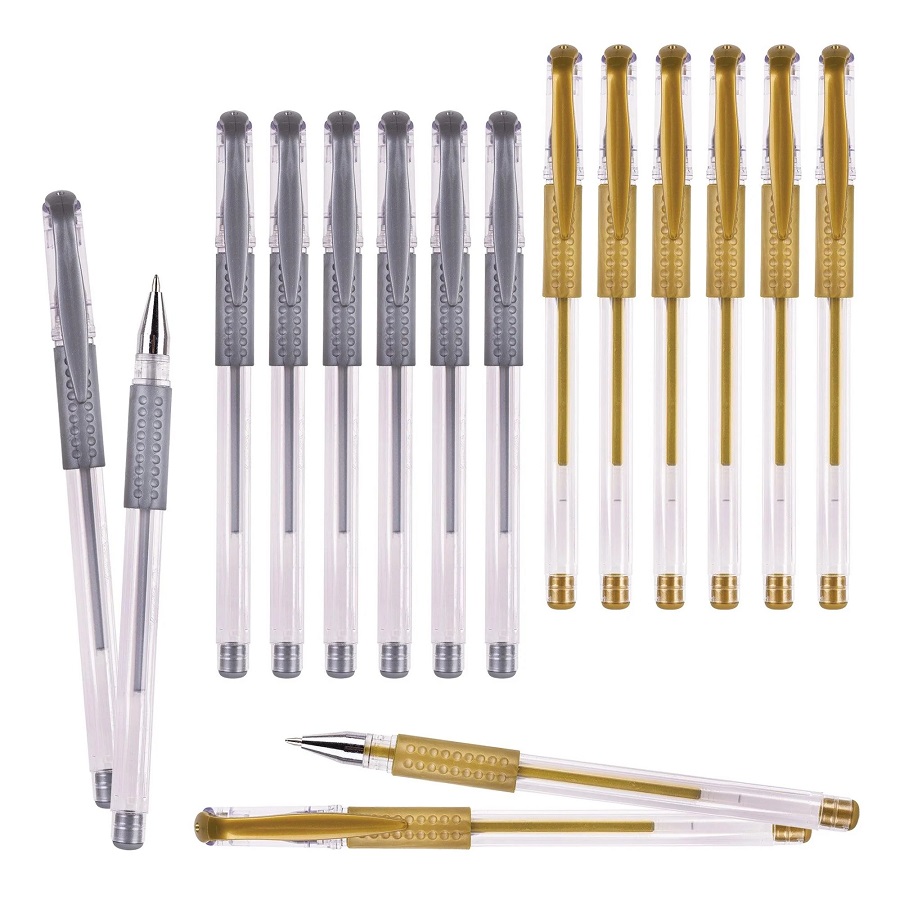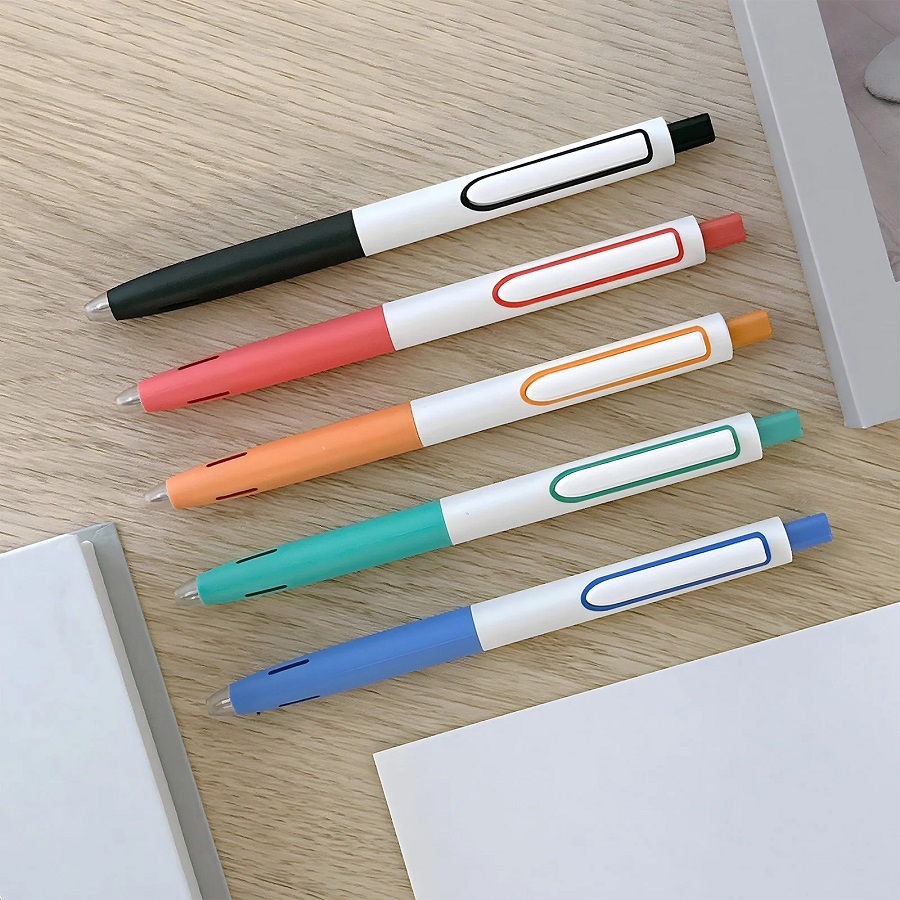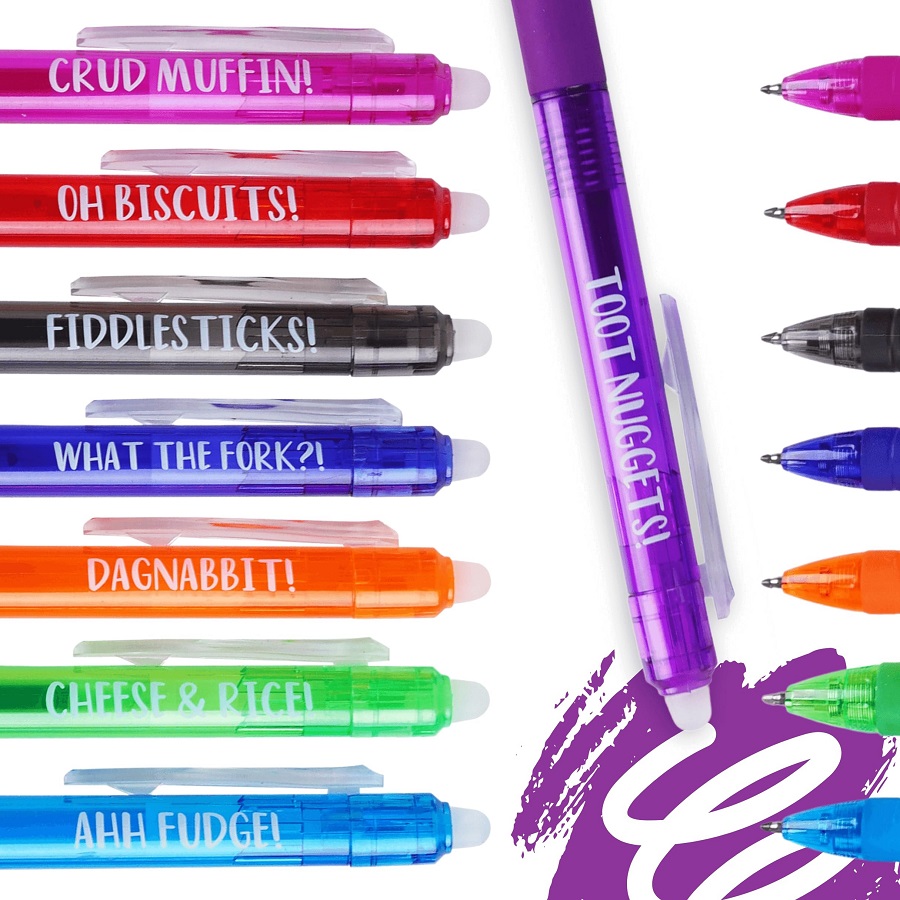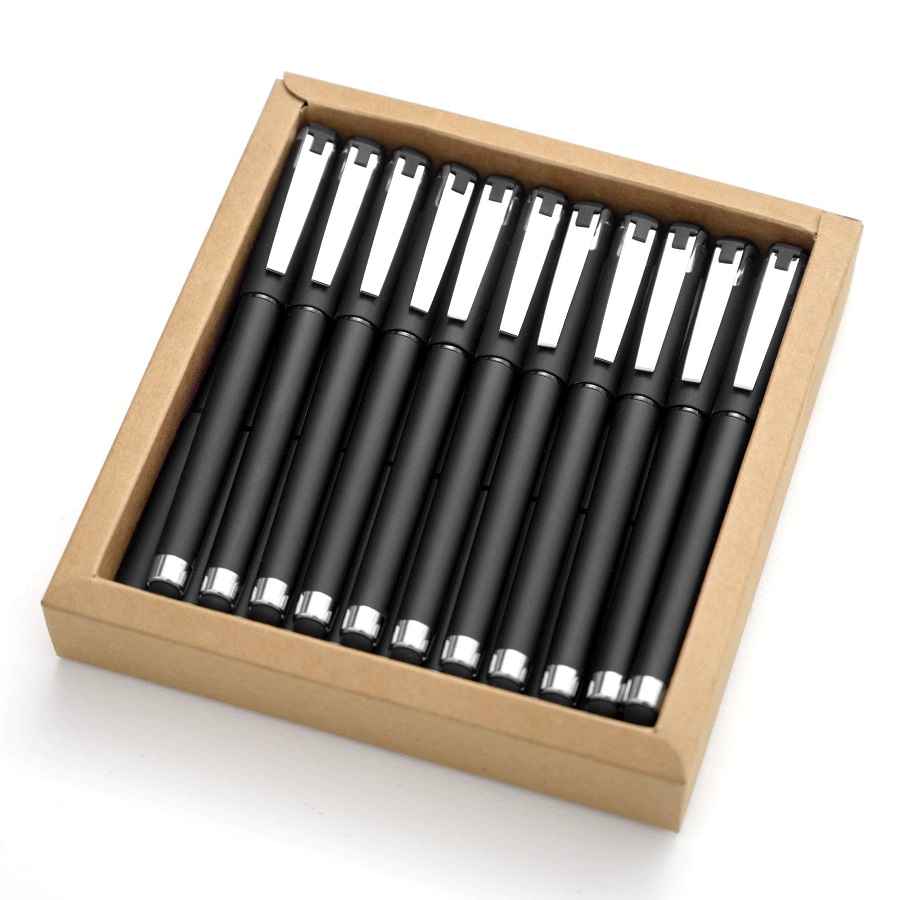Diagnosing Gel Pen Problems
Before attempting any fixes, it’s important to understand why your gel pen isn’t working. Start by checking the ink level to ensure there is ink inside. Sometimes, air pockets form in the ink chamber, preventing ink from reaching the tip. If the ink is dry or the pen has been dormant for a while, the problem might be ink solidification. Inspect the nib for any debris or dried ink that could be blocking the ink flow. Finally, consider the pen’s age — older pens may have ink that has deteriorated over time. Diagnosing the problem correctly increases the chances of success when you try to get a gel pen to work again.
Simple Solutions to Get Your Gel Pen Working Again
If your gel pen has stopped working, don’t despair. Simple steps can often bring it back to life. Here’s how to get a gel pen to work with a few easy methods.
First, give your gel pen a good shake. This mixes the ink and eliminates air bubbles that block ink flow. Hold the pen firmly and flick it a few times, pointing downwards.
Next up, the warmth of your hands can do wonders. Roll the pen back and forth between your palms. The heat from your hands can help soften ink that has thickened inside the pen.
If the ink won’t flow, try a little scribble. Find a piece of scrap paper. Press down slightly and make fast, short scribbles. Keep at it until the ink starts to come out. This action can stimulate ink flow when it seems stuck.
Another technique involves tapping. Gently tap the pen tip on a hard surface. This can help reposition the ball inside the nib, allowing ink to flow out. Take care not to damage the pen tip by tapping too hard.
Lastly, if you think the ink is drying up, a quick hack is to dip the pen tip in warm water for a few seconds. Wipe off any excess water and try writing again. The water helps to dissolve any dry ink.
Remember these tips the next time you face a gel pen that won’t write. With patience and the right technique, you can get almost any gel pen to work again.

The Heat Method: A Popular Fix
Many gel pen users turn to the heat method as a popular fix. When pens stop working, heat often becomes a handy ally. This method relies on warmth to make the gel ink runny enough to flow. Gel inks can thicken over time, especially when not used frequently. Warmth can reverse this by melting any ink that has started to solidify.
To apply the heat method, you have three options. First, hold your gel pen tightly in your hands. Roll it quickly between your palms for a minute. The friction generates heat, loosening the ink inside. Remember, keep rolling until the pen feels warm.
Second, place your gel pen near a heat source. Be cautious; too much heat can damage the pen. A safe distance from a lamp or on a warm windowsill works well. Leave it there for a few minutes, but check it often.
Third, you can use a hairdryer. Set it to a low heat setting. Wave the hairdryer back and forth over your pen for a short time. The warm air gently heats the ink without harming the pen’s body. After using the hairdryer, wait for a moment before testing the pen to avoid burns.
Remember to apply heat moderately. Excessive heat damages the pen and deteriorates the ink quality. So use the warmth of your hands, place pens near a moderate heat source, or use a hairdryer on low. With gentle heat, ‘how to get a gel pen to work’ becomes a question easily answered.
The Scribble Method: Getting Ink Flowing
Sometimes, how to get a gel pen to work is as simple as scribbling. This method is a go-to solution for many. Quick, vigorous scribbles on a piece of scrap paper can start ink flow. This works well to loosen any gel ink that’s stuck.
Start by pressing the tip onto paper. Don’t press too hard, though. Make fast, short strokes back and forth. The idea is to create friction, which can help heat up and loosen the ink. Continue this motion until the ink appears. The scribble method also helps clear tiny air pockets that block ink.
If a few seconds of scribbling doesn’t work, keep going. Sometimes it takes a bit longer. The action is simple but effective. Rotate the pen as you scribble. This ensures that all sides of the ball get rolling.
Keep the scribble technique in mind next time you have a gel pen issue. It’s a quick fix that often does the trick. Gel pens can be temperamental, but this method helps to tackle one common problem.
Cleaning the Nib: Unclogging for Smooth Writing
If you find your gel pen still won’t write after shaking and warming, check the nib. Sometimes, ink dries at the tip and blocks the flow. Cleaning the nib can often fix this. Here’s what to do to unclog your gel pen for smooth writing.
First, remove the cap and inspect the nib. Look for visible clumps of ink or debris. If you see any, gently wipe the nib with a clean, damp cloth. Be gentle to avoid damaging the delicate tip.
Next, try rolling the tip on a clean sheet of paper. Apply light pressure as you roll. This may dislodge any dried ink. Keep rolling until ink starts to appear.
If the above steps don’t work, use a pin or needle. Carefully insert it into the tip of the nib. Gently move it around to break up solidified ink. Remember, do this with care. You don’t want to scratch or bend the nib.
Lastly, for tougher clogs, dab a bit of rubbing alcohol on the nib. The alcohol can help dissolve stubborn ink. Let the nib sit with alcohol for a few minutes. Then, try writing with it again.
These methods are simple yet effective. Cleaning the nib is key to unclogging and ensuring smooth writing. Give them a try next time your gel pen gives you trouble.

Dealing with Ink Clots in Gel Pens
Dealing with ink clots in your gel pen can be frustrating. But there’s no need to throw your pen away just yet. Addressing ink clots properly can save your pen and restore its writing abilities. Here’s how to tackle ink clots and get your gel pen to work smoothly again.
First, examine the ink chamber. Do you see thick ink clots? Such clots can stop the pen from writing. One simple tip is to gently tap the pen against a surface. This can break up some clots and allow ink to flow.
Another method involves using heat. As we discussed earlier, warmth can work wonders. Hold the pen under a warm light bulb or use the rolling method. The heat may melt the clots, letting the ink move again. But always be cautious with heat to avoid damage to the pen.
If the clots are stubborn, dismantle the pen if possible. Take out the ink refill and check for clots. You can often clear them by gently rolling the refill on a warm surface.
Sometimes, you can also fix clots by writing. Start with light pressure on warm paper. Slowly increase the pressure. The heat and movement together can help clear the clot.
Keep these tips in mind next time you face a gel pen with ink clots. With a bit of patience and the right method, you can often get the pen writing again. Remember, proper care can often prevent these issues from happening in the first place. But when they do arise, these solutions can help you deal with ink clots effectively.
Storing Your Gel Pens Properly to Prevent Future Issues
Proper storage is key to keep gel pens ready for use. Here’s how to prevent issues before they start.
Store gel pens in a cool, dry place. High temperatures and moisture can cause ink to thicken or leak.
Always place your gel pens tip-up when not in use. This helps avoid ink settling and clumping at the tip.
Cap your pens tightly after use. This prevents the ink from drying out and reduces air bubbles.
Avoid dropping your pens. Impacts can dislodge the ink or damage the tip, making them hard to use.
Keep gel pens away from direct sunlight. UV rays can degrade the ink quality over time.
Use a pen case or holder. This protects the pens from dust and makes it easy to find the right color.
By following these simple storage guidelines, you can prolong the life of your gel pens. This reduces the need for fixes and ensures a smoother writing experience.

When to Replace: Understanding the Lifespan of Gel Pens
Despite your best efforts to revive a gel pen, sometimes replacement is the only option. Knowing when to replace a gel pen is key to ensuring a consistent and reliable writing experience. Here’s what to look for when deciding if it’s time to say goodbye to your pen.
First, check if the ink chamber is empty. If you can’t see any ink, or if the pen writes faintly on and off, it’s probably time for a new pen.
Next, look at the ink quality. If the ink has separated or changed color, this signals the end of the pen’s life. Inconsistencies in ink color and texture mean it’s time to replace.
Then, consider the flow consistency. If you experience continuous flow issues despite trying all fixing methods, it’s a sign. A pen that no longer writes smoothly and consistently should be replaced.
Also, evaluate the pen’s overall condition. If the pen feels loose or the tip is damaged, it’s best to find a replacement. A damaged nib can result in poor writing and may even scratch your paper.
Lastly, think about how the pen feels in your hand. If it’s no longer comfortable to hold due to wear and tear, get a new one. Writing should feel effortless, and a worn-out pen can hinder that ease.
Remember, how to get a gel pen to work isn’t always about fixing it. Sometimes, getting a new pen is the best solution. Keep an eye out for these signs, and you’ll know when to replace your gel pen for a fresh start.
